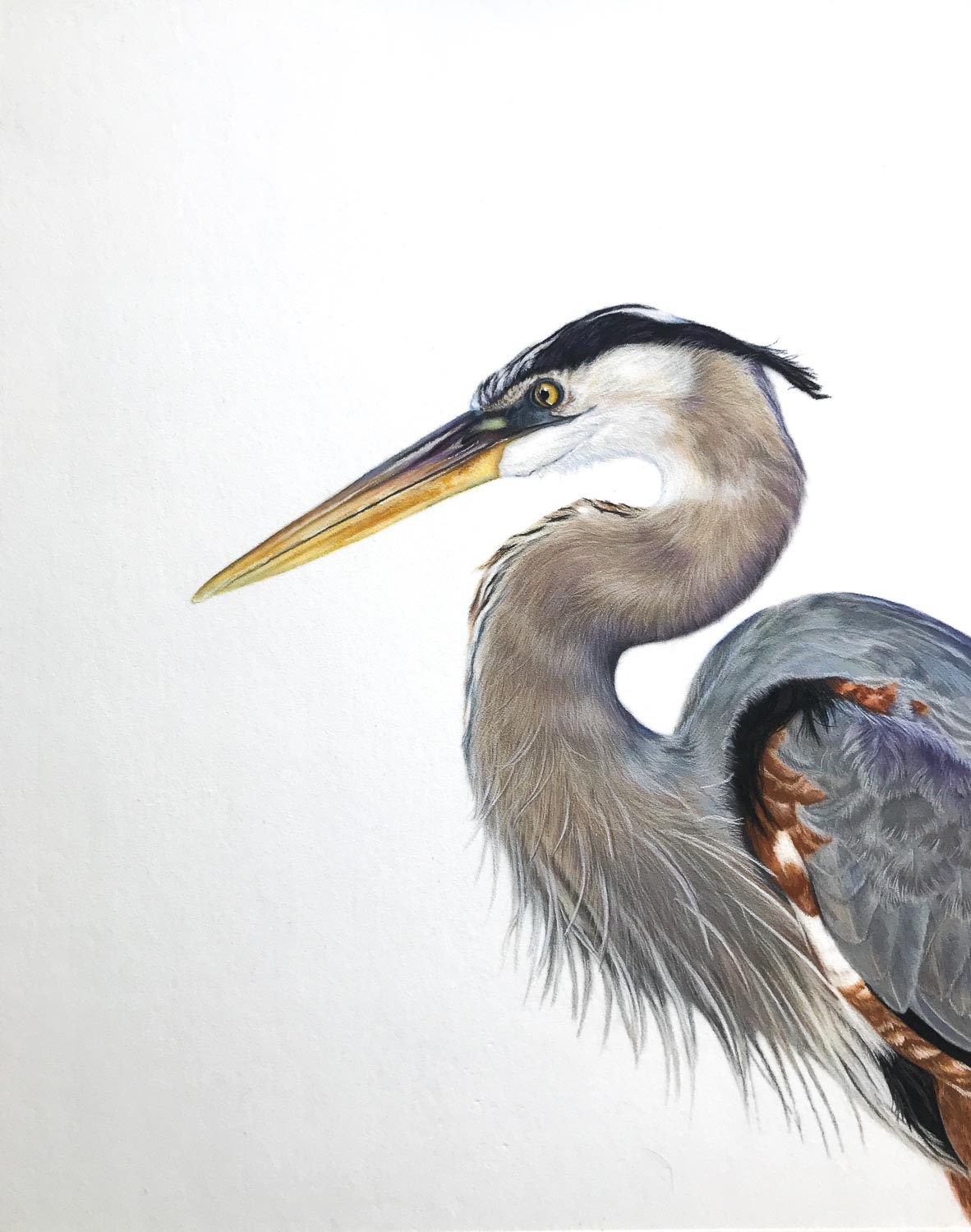Great Blue Heron in PanPastel and Pastel Pencil
One of my favorite pieces this year was “Forager” - featuring a great blue heron. This is such a popular bird, even among non-birders. They’re relatively easy to see and they often allow people to be fairly close to them as well. Every job I had at a nature center or park involved seeing great blue herons on a regular basis, so I have a lot of fun memories involving them…even from before I was a birder.
I chose to use PanPastel for most of this piece because of the softness I can achieve using this medium. I generally like to use filbert shaped paintbrushes with PanPastel as they hold up better on the paper and they also help me to better control the thin layers of pastel that I want to have — so that I can get clean detail on top of that with pastel pencils.
You can see that I often like to throw in pops of color that I may pick up from a reference photo. This often involves purples and blues due to the sky and I love to punch up the color a little bit extra compared to what I see in a photo. I used a fair amount of purple in the heron’s neck as well as a variety of blue tones along the top layer of the back and wings. I feel like it keeps my work realistic, while also making it more interesting.
I really liked this view of the great blue heron because of it capturing that classic S shaped neck. I also sort of imagined the bird to be sitting on the side of some creek or body of water, waiting for anything edible to come by. Great blue herons will basically eat just about anything that is within reach — this can mean fish, insects, amphibians, small mammals, reptiles, and even other birds!
To finish this piece, I used a small amount of pastel pencils to add details of those fluffy feathers. I love painting the base layers with PanPastel, but the details is where everything really comes together! “Forager” is 11”x14” and the original has sold. You can find limited edition prints available in my shop as well as great blue heron notecards available as singles or in custom 8-card or 16-card sets!
Great blue heron populations are stable right now, with the exception of the “great white heron” group in southern Florida. It is believed that mercury levels in local waterways may be a factor. While the great blue heron appears to be mostly stable, it is still a species that relies on wetlands, which makes it more vulnerable to habitat loss and impacts caused by humans.
Have you seen great blue herons or great white herons out in the wild?



